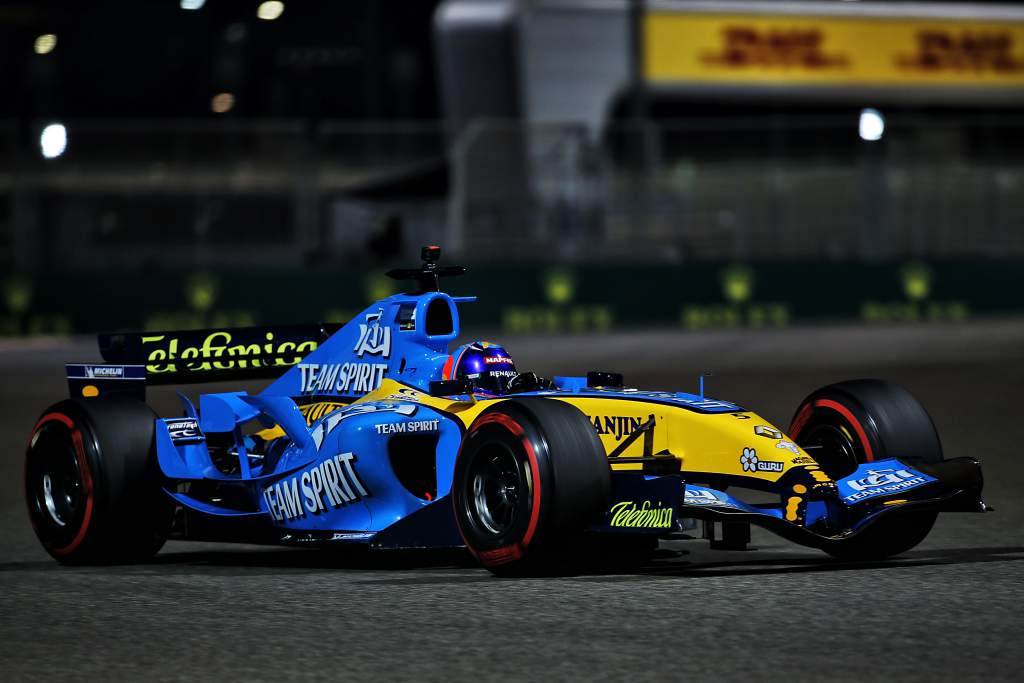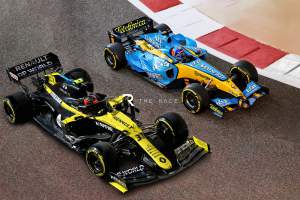Up Next

Mercedes boss Toto Wolff believes Formula 1 must assess how to give Abu Dhabi “spectacular” racing and why Renault’s 2005 car demonstration was so captivating, after the 2020 season ended on a negative note.
A dull Abu Dhabi Grand Prix rounded out a bizarre year, one week after a thrilling Sakhir Grand Prix, and a season in which Mercedes domination was softened by several race-by-race storylines and the intrigue of the championship taking place at a relentless pace amid the coronavirus pandemic.
However, F1 goes into the winter with soul-searching to do after the limitations of the championship’s current era were brought into focus by a widely criticised finale and Fernando Alonso’s demonstration runs in his title-winning 2005 car over the course of the weekend.
Red Bull driver Max Verstappen took a lights-to-flag win unchallenged while there was precious little overtaking throughout the field beyond offset strategies as cars struggled to follow too closely.
And Alonso’s Friday, Saturday and Sunday runs in his 15-year-old, V10-engined R25 evoked memories of a more spectacular era, casting questions over the spectacle of the bigger, heavier, quieter V6 turbo-hybrid cars of today.
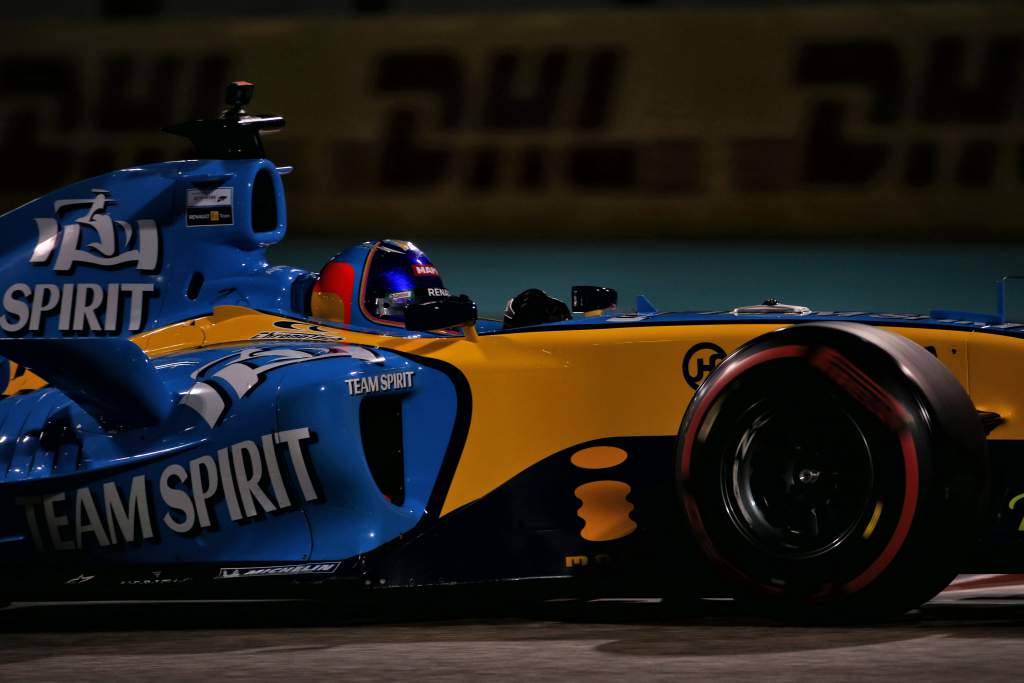
Wolff was asked about both elements after the race, and suggested the Yas Marina circuit could use a potential layout change.
“The amount of messages I got during the race with the sleeping emoji was the most I ever got,” Wolff said. “What can we do? I think we need to look at everything. I think it’s very difficult to follow in the wake in Abu Dhabi.
“It’s a fantastic venue, the infrastructure is like no other, and spectacular. But, like we saw with Alonso and [Vitaly] Petrov [in 2010, pictured below] it’s just so difficult to overtake even if the car is slow in front of you.
“I think maybe it’s worth looking at the configuration. It’s none of my business but maybe their track configuration, we could look at how [changing] that would make it a little bit more interesting for overtaking purposes.”
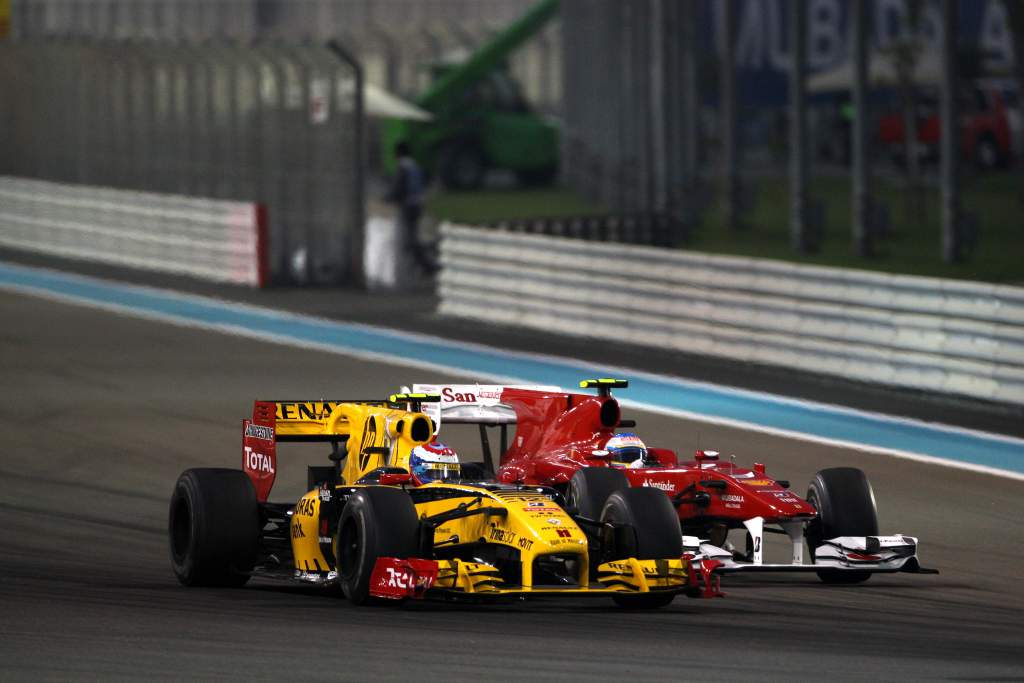
Abu Dhabi’s slow final sector with a sequence of 90-degree corners make it difficult for the current generation of F1 cars to follow, while plenty of run-off means drivers are not punished badly by mistakes.
It means drivers struggle to take advantage of the two long back straights and big braking points because they can’t get close enough to utilise the tow.
After another dull finale in 2017 track designer Hermann Tilke suggested one unidentified corner could be changed to improve overtaking but the layout has remained the same.
“All of us, including F1 and the local guys, will look at it and say, ‘what can we really do?’ And sometimes you need a race like this to make a next step and develop it,” said Wolff.
“I’m sure that races here can be very exciting if we choose the right track layout.
“I wouldn’t want to miss Abu Dhabi from the calendar, it’s just a fantastic place and one of the best attractions for guests when we have hospitality and it’s adding to the calendar, it’s glamourous.
“We just need to give it more spectacular racing.”
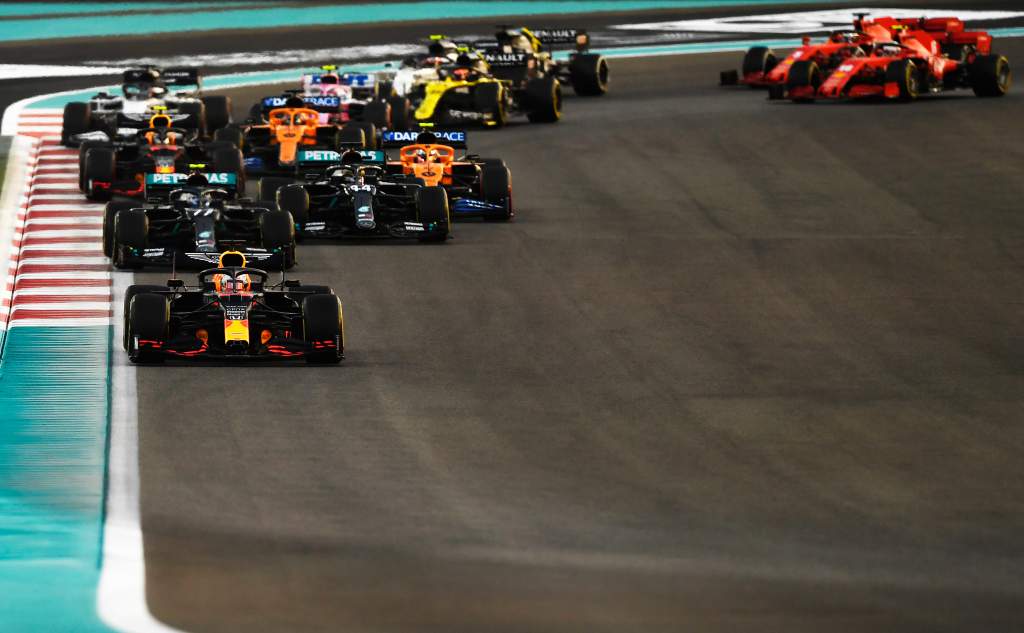
Aside from the limitations of the Abu Dhabi venue, F1’s modern spectacle has been in the spotlight all weekend thanks to the juxtaposition of the current era with the howling V10s from several generations of car ago.
Alonso’s aggressive demo run in the R25, put on by Renault ahead of its transition to the Alpine name next season, has wowed drivers, team bosses and other onlookers over the last few days.
Wolff said that the V10 engine is a “relic of the past when reducing CO2 emissions wasn’t on the cards and electric mobility didn’t exist and I think we just moved into a new era and that also means making compromises”.
However, he said that the car – which was running on Pirelli slicks instead of the grooved tyres of its own era – did look spectacular and it was a worthy exercise for F1 to establish exactly why.
The perfect onboard doesn't exi… Oh wow. #RSspirit #AbuDhabiGP @alo_oficial @f1 pic.twitter.com/i6L2eVA9yg
— Renault F1 Team (@RenaultF1Team) December 11, 2020
“It was very agile, very small, 150kg lighter, a screaming engine,” he said. “The car was going four or five seconds slower than us and when you look at the TV pictures, it seemed like it was going much faster.
“There’s something to learn. I believe there’s always something to learn.
“I don’t think anybody regrets from Formula 1 to have had the car out there because we need to analyse now that we saw it live, what is so attractive?
“Is it the audio-visual experience that makes it attractive? But then I saw the pictures without the sound and it still looked great. So why is that?
“I think we need to analyse that.”
Tracks are the main factor
Gary Anderson
 What a difference a week makes. Seven days ago, I was singing the praises of how exciting the race in Sakhir was but in Abu Dhabi it was completely the opposite. Yes, as normal in the midfield there were a few battles going on but nothing at the front.
What a difference a week makes. Seven days ago, I was singing the praises of how exciting the race in Sakhir was but in Abu Dhabi it was completely the opposite. Yes, as normal in the midfield there were a few battles going on but nothing at the front.
As the cars are the same as last weekend, this must show to someone that the tracks are what needs to be looked at. Keep changing the aerodynamic regulations as much as you want, but if a car is generating downforce from travelling through the air it will still be compromised when following another car. On top of that, if the tyres suffer from overheating then that is a double whammy.
Abu Dhabi has never been a cliffhanger and as the last race of the season unfortunately it is the one that people remember, so perhaps a change for the last event should be on the cards. But I don’t think anyone really knows what makes up a good race and could in any way guarantee it. The one thing I would say is that if we do have to have the DRS, we shouldn’t have it on one straight with a chicane and then again on the next straight – they need to be separated by a few corners.
What would I do? First I would start to have a serious analysis of non-DRS overtaking moves over the last couple of seasons, look closely at what led to them and then make some decisions from there. They have happened, they have been exciting, so study them and figure out why and see if any of those overtakes, the corners that helped create them and what the drivers had to do as far as planning and execution was concerned yield conclusions that could be applied to some of the existing circuits.


